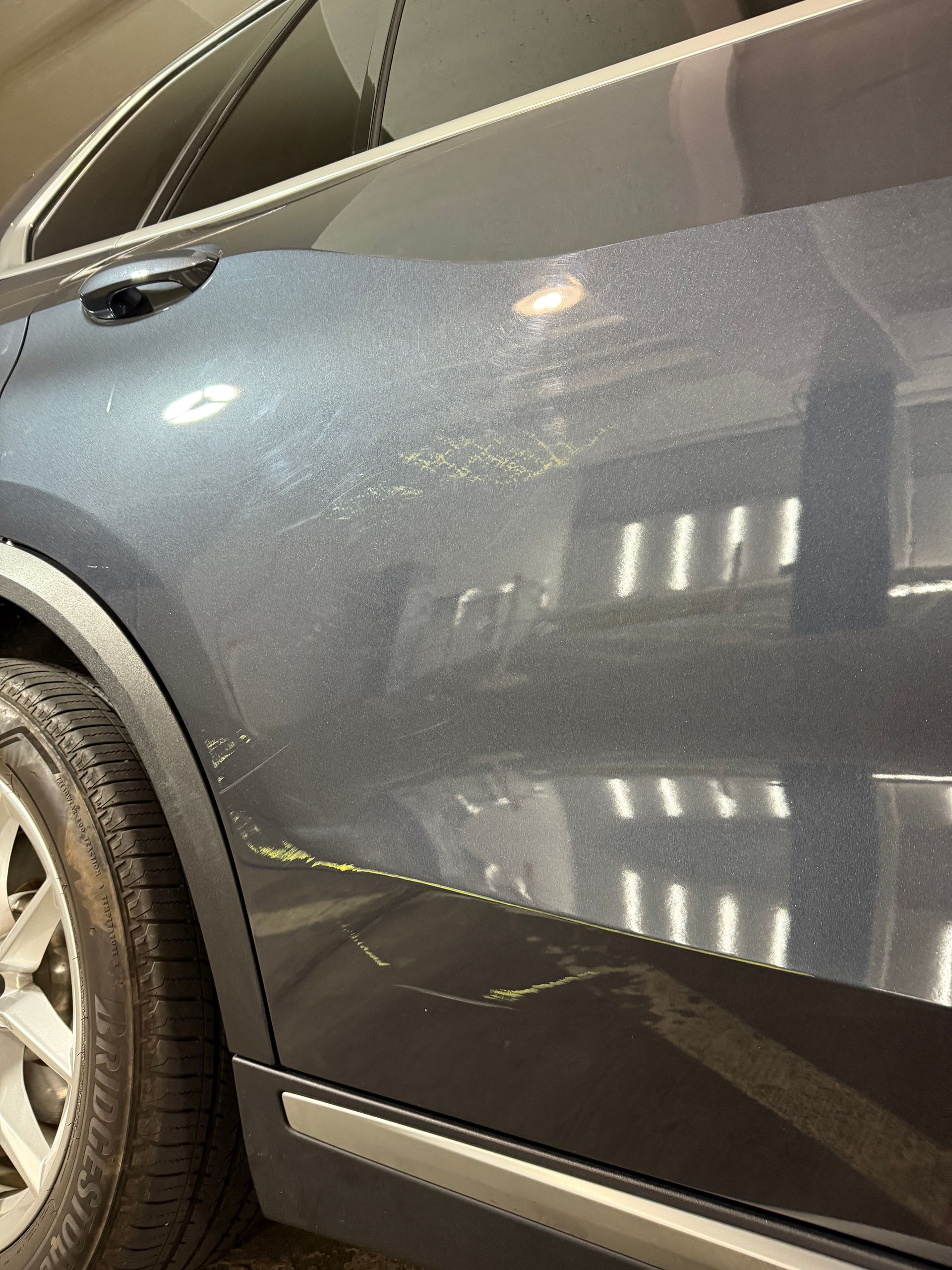A Beginner's Guide to Cleaning your Steering Wheel Like a Pro
January 27, 2024

Your steering wheel is one of the most frequently touched parts of your vehicle. Over time, dirt, grease, and grime can build up, making it feel gritty or slippery and look dirty and dingy. While it’s easy to overlook steering wheel maintenance, keeping it clean isn’t just for aesthetics - it’s critical for maximizing control and ensuring safety while driving. A study published by Ashton University found that the typical steering wheel could have up to 700 different types of bacteria, while a toilet seat only has 60 different possible types.
In this beginner's guide, we’ll walk through the fundamentals of proper steering wheel cleaning so you can keep your wheel looking like new and maintain a solid grip at all times.
Understanding Steering Wheel Materials
The first step is identifying what material your steering wheel is made of, as the proper cleaning method depends on the type of material:
- Leather: Most luxury vehicles have leather steering wheels. Leather requires gentle cleansers and conditioners to prevent drying out.
- Synthetic leather: Less expensive to maintain than real leather. Can handle stronger cleaners but still requires some conditioning.
- Plastic/rubber: Most affordable and durable factory steering wheels. Can be cleaned aggressively with chemical cleaners.
- Wood: Found in some luxury or custom vehicles. Requires very gentle cleaning like leather.
- Alcantara: Soft suede-like synthetic material. Needs a delicate touch to avoid damage.
Assembling Your Cleaning Tools
Having the right cleaning tools makes steering wheel cleaning much easier:
- Microfiber cloths: Gentle on all surfaces and great for wiping away dirt and dust.
- All purpose cleaner: All-purpose interior cleaner safe for most materials. Good for quick cleanups.
- Detailing brushes: Soft brushes to scrub away stubborn dirt in crevices and texture.
- Exfoliating pad: For deeper cleaning of synthetic leather and plastic wheels.
- Leather conditioner: Nourishes and protects leather after cleaning.
- Cotton swabs: Useful for extremely delicate materials like real wood or Alcantara suede.
Pre-Cleaning Assessment
Before cleaning, inspect your steering wheel closely and make note of problem areas like heavy dirt or stain buildup. This allows you to tailor your cleaning efforts to the wheel's specific needs.
Check for:
- Oily, shiny areas indicating dirt and skin oil accumulation
- Dull, faded spots suggesting sun damage on leather
- Sticky spots or crusty textures from spilled drinks
- Gritty textures when you run your hand across it
General Cleaning Techniques
For regular maintenance cleaning, a microfiber cloth lightly dampened with a detailing spray is ideal for most steering wheel materials. Wipe the wheel surface using small circular motions to lift up and capture dirt.
For deeper periodic cleaning, opt for a detailing brush and interior cleaner fluid designed for your wheel's surface type. Use short scrubbing motions to dislodge stuck-on grime. Finish by wiping clean with a fresh microfiber cloth.
Deep Cleaning Methods
For more intensive cleaning every few months:
- Leather: Mix a mild soap with warm water and use a soft brush to create a light lather on the wheel. Wipe clean with a damp cloth, then apply leather conditioner.
- Plastic/Rubber: Use an exfoliating pad dipped in interior cleaner for an abrasive scrub. Rinse with a wet cloth until all residue is gone.
- Alcantara: Very lightly mist water using a spray bottle and dab clean with a microfiber cloth. Let fully air dry before using.
- Wood: Wipe with a cotton cloth dampened with distilled water. Dry immediately with a clean cotton cloth.
Removing Tough Stains
For challenging stains, try these techniques:
- Ink/grease: Use a cloth dampened with isopropyl alcohol. Rinse and dry thoroughly after.
- Dried soda: Saturate with interior cleaner and scrub gently with a soft brush.
- Mysterious spots: Dab with a cloth and adhesive remover made for automotive upholstery.
Always follow up spot cleaning with a regular cleaning to avoid damage or residue.
Maintaining a Secure Grip
A clean steering wheel helps maintain a secure grip by getting rid of oils, residue and buildup that can make the wheel slick. Thorough cleaning restores traction and control.
Extra Cleaning Tips
- Use a toothbrush or detail brush to gently clean stitching, buttons, and tight crevices.
- Focus on the areas at 9 and 3 o’clock, where hands contact the wheel the most.
- Move in consistent circular motions to effectively lift dirt.
- Change cleaning cloths frequently to prevent spreading around dirt.
- Work in manageable sections instead of tackling the whole wheel at once.
Prevention Strategies
Implement these habits to keep your steering wheel cleaner between washes:
- Wash hands before driving to reduce dirt and oil transfer.
- Wipe down the wheel routinely with quick detailer spray.
- Cover the wheel with a fitted sun shield if parking outside for extended periods.
- Apply a protectant like 303 Aerospace Protectant to minimize dust buildup.
Maintaining Steering Wheel Cleanliness
Get into the habit of quick cleaning your steering wheel after each drive to prevent heavy buildup. Wipe it down with a microfiber cloth sprayed with interior detailer to easily capture dust and oils transferred from your hands.
Deep clean your steering wheel every 1-2 months using the methods outlined above to keep it looking fresh and new. Well-maintained wheels enhance the interior ambiance and provide a pleasant grip.
Conclusion
Regular steering wheel cleaning is a simple practice that pays dividends in the safety, longevity and aesthetics of your vehicle’s interior. Understanding your wheel's material requirements, using the proper tools and techniques, and cleaning thoroughly on a routine basis will keep your wheel in prime condition for the best driving experience.




© Westchester Auto Detail 2020-2025. All rights reserved.





